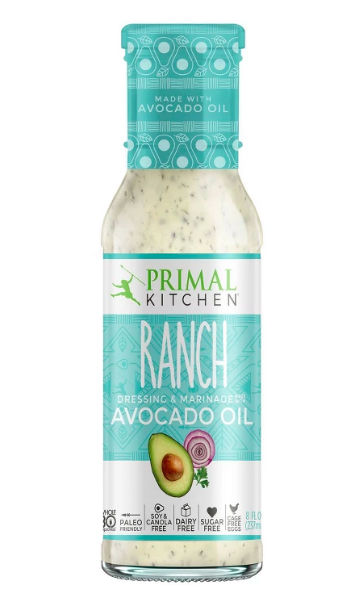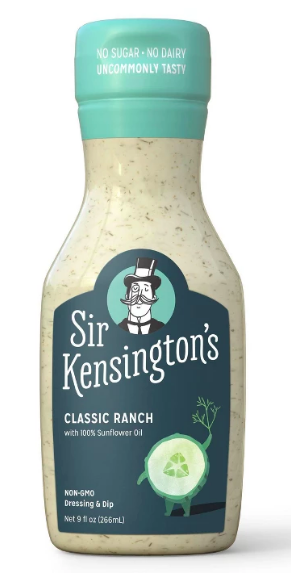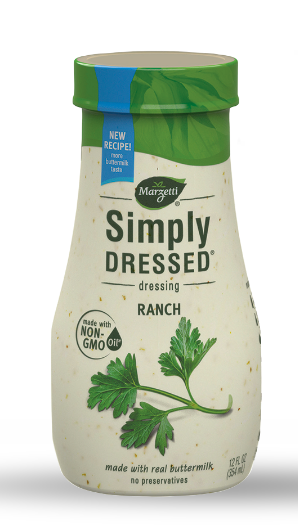So let's chat about coffee and caffeine consumption in kids and teens. I LOVE coffee. There are really only a handful of things that give me more joy than a hot cup of coffee and a cool, crisp, quiet early morning - you know, preferably from a raised porch with a view of the fog coming up over the mountains…but really let's not be so picky - coffee brings me great joy. And it's good for you…as long as you treat it with the respect it deserves.
Walk into a Starbucks or coffee shop anywhere and you're guaranteed to see a gathering of teens. I honestly never even thought twice about this until I noticed the large group of teens crowded around the coffee bar at my kids' school and thought…wait, are all those kids drinking coffee drinks and then going to sit in class? I wondered how many of their parents have talked to them about drinking coffee and I wonder how many of those parents even know what to look for when it comes to healthy coffee (and caffeine) consumption. So let's get it all out there now - and make sure our kids know what their getting in to ;)
A Stimulant
The main pull toward coffee for most people is caffeine. The caffeine found in coffee is the same as what is found in energy drinks, tea, soda and even chocolate (all in varying amounts) and caffeine is a stimulant. In the simplest terms, caffeine stimulates the central nervous system (the brain & spinal cord) and in turn causes increased alertness and in most people a temporary boost in energy and mood.
A recent study on the effects of energy drinks in kids and teens found that close to 80 percent of the world's population consumes caffeinated products every day, including 75 percent of children and that while the soda consumption in most countries has declined over the past 10 years, caffeine consumption hasn't. This means that teens are now turning more regularly to coffee and energy drinks for that caffeine boost (1).
Effects of Coffee Consumption - The Good
In many circles, coffee is praised for its potential health benefits. These include cancer-protective properties, improved blood sugar, anti-inflammatory properties and increased mental and athletic performance. In healthy consumption, caffeine increases blood flow to the muscles and gives a mental and physical "boost" that may help some people increase performance and small amounts of caffeine have been shown to increase the speed at which we process information, boost mood and alertness, and increase awareness, attention, and reaction time. It is important to note, however, that most of the research surrounding the positive effects of caffeine were conducted on adults and not children and teens and that sensitivity levels to both coffee and caffeine, in general, vary wildly among individuals (2).
Effects of Coffee Consumption - The Not-So-Good
Coffee and caffeine consumption can bring on a number of unwanted and unexpected side effects (in both adults and teens). These include:
Nervousness and Anxiety
Headaches and/or Migraines
Difficulty Concentrating
Digestive problems
Increased heart rate
Irritability
Restlessness and inability to sit still
Insomnia and sleep issues
Hormone Imbalance
Teenagers brains and bodies are still developing and overdone caffeine consumption can have a negative impact on both. How?
Sleep - In order for the brain to fully develop, we need deep sleep and caffeine can take a toll on the amount and quality of sleep experienced. While some people report caffeine having no effect on their sleep at all, others can experience a significant decrease in sleep quantity and quality after consuming even a small amount of caffeine.
Nutrient Absorption - Caffeine can affect the body's ability to absorb nutrients including iron, zinc, and calcium. Long-term issues with this can result in iron-deficiency anemia, bone loss, and osteoporosis. A teen needs sufficient nutrient absorption for healthy growth and development so impairment from caffeine consumption can lead to long-term consequences if not monitored properly.
Hormones - Cortisol is the stress hormone in the body. It increases in times of mental, emotional or physical stress and this process is completely healthy and normal. However, chronically high levels of cortisol can cause major hormonal issues and the caffeine found in coffee can cause increased stress and cortisol levels and mess with the overall hormone balance. This can be particularly problematic for teen girls whose hormones are changing and developing and the long-term effects can cause a host of issues including thyroid problems.
Stress - Plain and simple: if your teen experiences regular anxiety or high stress, encourage them to skip the coffee (and caffeine). The caffeine in coffee stimulates the "fight or flight" stress response and can make anxiety worse or even trigger anxiety or panic attacks. With a record number of kids and teens reporting feelings of chronic stress, anxiety and depression, caffeine consumption in all teens should be closely monitored for its effects.
Nutrition
Another factor to consider when looking at teen coffee consumption is what kind of coffee they're drinking. Because while coffee itself has been shown to have some serious health benefits, what we add to it matters and can easily negate some of the positives (3). Back to those teens in Starbucks…I'm willing to bet at least a couple of them have a Frappuccino or Pumpkin Spice Latte in their hand. A 16 oz Starbucks Vanilla Frappuccino has 69 grams of sugar - that's almost 5 Tbsp (the recommendation for sugar intake in teens is 25 grams PER DAY). And while that may be extreme, even a simple, unflavored latte clocks in at 17 grams. (Interested in a full list of sugar content in Starbucks coffee drinks? This one is plain and simple.)
In addition to the health implications (weight gain, increased risk for diabetes and heart disease, acne, etc.) of sugar-sweetened coffee drinks (aka there's way too much sugar in them), the combination of that volume of sugar with the caffeine can have some serious behavior consequences - these vary widely from individual to individual but intake of caffeine + sugar can make it difficult to sit still in class, concentrate on material presented, and make sound self-control decisions (4). And if your child or teen is prone to anxiety or ADHD behaviors (or diagnosis), they should avoid caffeine altogether and be careful with sugar consumption as the effects of sugar on behavior can be more severe (5).
Dependence
As anyone who's missed their morning cup of coffee knows, with the consumption of caffeine comes the dependence on caffeine. Many people feel symptoms of withdrawal when they stop consuming it. These symptoms can present even more quickly and be more severe in teens. Symptoms include headaches, trouble concentrating, fatigue, irritability, anxiety and depression, and even flu-like symptoms.
If you (or your child) want to decrease (or stop) caffeine or coffee consumption, try tapering - reducing consumption by small amounts over time until you're completely off.
Setting Healthy Boundaries
The important thing when it comes to teens and coffee consumption is that there is open communication. Just like with their diet, you can't control all the decisions they make when you're not around, but you can help them be educated and encourage healthy behaviors. Consider the following ideas for managing coffee (of caffeine) intake:
Observe - start to take notice of what kind and how much caffeine your teen is consuming. Talk to them about their habits and then do some research to find the amount of caffeine (and sugar) present. Share this information with them so they know what is going in their body and can start to make the connection between consumption and behavior or performance.
Talk - talk to your teen about good health and habits. Just as you would drugs or alcohol, discuss the dangers of overconsumption of caffeine and help them know the signs and symptoms that they may be overdoing it. Consider setting limits together with your teen, such as only getting a coffee drink a couple times a week or limiting caffeine to certain times of day - this could be especially important if you suspect caffeine may be affecting sleep quality.
Show - lead by example. Even teens watch and observe their parents habits and behaviors so demonstrate for them a healthy relationship to coffee and caffeine the same way you would food, TV, exercise, or phone use.
The Bottom Line
Coffee can be a part of a healthy diet and lifestyle but should be consumed in moderation. Sensitive individuals and especially children and teens should be mindful of caffeine consumption and take notice of the effects on their body. According to the American Academy of Pediatrics, there is no designated "safe" threshold for caffeine for children under 12 and teens should cap intake at 100 milligrams per day - this is the equivalent of 1 cup of coffee, 1-2 cups of tea, and 2-3 cans of soda (let's all ditch the soda, shall we?). If you're concerned about your teens coffee or caffeine intake or need help navigating how to talk to your kid about caffeine consumption or healthy habits in general, let me know - I'm available to work one-on-one or in a group setting.












